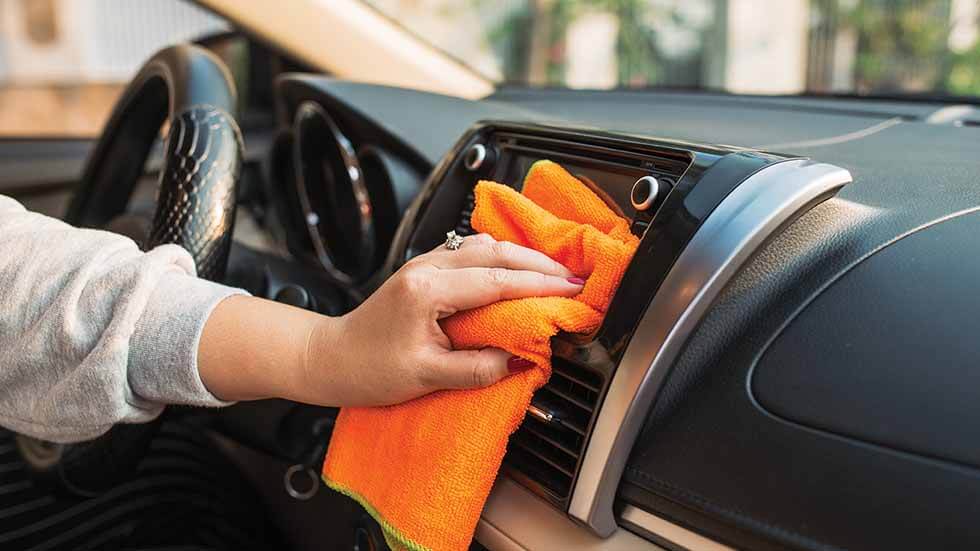SIMPLE WAYS TO BOOST YOUR VEHICLE’S TRADE-IN VALUE
Get more money from your trade-in


As we grow up, our parents help teach us many lessons: the difference between right and wrong, how to treat others with respect, how to work hard and persevere, and—funny but true in my case—the occasional advice on how to improve your vehicle’s trade-in value. That’s because my dad, who’s now retired, worked in the auto business for more than 40 years as a manager and wholesale car buyer for some of the Philadelphia-area’s largest auto dealerships. Over the past few decades, I’ve bought and traded many vehicles at various dealerships, always keeping in mind these five tips from Dad.
1. DO YOUR HOMEWORK
Trade-in value is typically determined by a vehicle’s make and model, year, condition, mileage, and consumer demand in the local market. Research your vehicle’s trade-in value on websites such as Kelley Blue Book (KBB.com), NADA Guides (NADA.com), and TrueCar (truecar.com) before setting foot on the dealer’s lot. You should be aware of your vehicle’s history with a CARFAX report and bring the report with you to the dealership for backup. Also, be sure to get more than just one appraisal; trade-in value appraisals can range from dealership to dealership depending on how each views your vehicle’s salability.
Ideally, you should settle on the purchase price of your new vehicle before factoring in the value of any vehicle that you want to trade in or sell. This approach will cause less confusion about what you’re actually paying and receiving for each vehicle; however, dealers may assume that the vehicle you drove to the lot is a trade-in and, thus, treat the vehicles as a package deal.
2. KEEP YOUR MILEAGE IN CHECK
Keeping your mileage low is key to maximizing your vehicle’s value. Any remaining warranty on your vehicle will increase the value of your trade, as dealers know that they won’t have to spend their own resources on needed repairs still covered under the warranty. (Note that factory warranties generally follow the vehicle, not the vehicle owner.) Warranties also provide added peace of mind for potential car buyers, making your vehicle that much more marketable. Even without a warranty that’s still in effect, vehicles with low mileage tend to require less reconditioning on the dealer’s part, which will help increase your trade-in value.

3. PERFORM MAINTENANCE REGULARLY
A well-maintained car is a more desirable car, so ensure that you change your car’s oil and filter and rotate its tires at the prescribed intervals and that you address items indicated by any service lights on your dashboard. Also, keep documentation of your vehicle’s maintenance. If your vehicle needs repairs, weigh the cost of fixing them. Safety issues and minor repairs are typically a wise investment. Fixing minor dents and scratches are relatively affordable (mobile dent-removal experts will come right to your home to fix them), and if your tires are bald or the tread is low, replace them with an inexpensive yet reliable set. If the dealer doesn’t have to send your vehicle to a body shop or immediately replace tires, you’ll fare that much better financially.
4. CLEAN YOUR CAR
A dirty car is tough to sell, even as a trade-in to a dealer. If your car’s exterior is so dirty that the dealer can’t see the condition of the paint or your car’s interior is littered with so many food wrappers, empty water bottles, hair from Fido, and sand from last summer’s beach trip that the dealer can’t assess the state of the upholstery, carpets, etc., then you can expect a lower offer for your trade. Having your car professionally detailed can go a long way in improving your vehicle’s value. At minimum, wash and wax the exterior, and wipe down and vacuum the interior. Leaving some personal belongings inside is fine; in fact, it can imply that you’re not desperate to dump your car.
5. THINK RESALE VALUE NOW
Consider the anticipated resale value of any car you are considering buying. Historically, certain car makes—for example, Hondas and Toyotas—and current hot models—such as Corvettes and Camaros—have good resale value. The average length of ownership for a new car is about 6.5 years and for a used car is 5.5 years, according to automotive resource Edmunds.com. That means that car fatigue is bound to set in—perhaps even sooner than the satisfaction of your auto loan—and you may be back at the car dealership looking to trade in your vehicle sooner than expected—or perhaps even selling the vehicle directly to a car buyer. When you do, you’ll want to get the most money for your vehicle, and making an informed purchase with resale value in mind now can help you do just that later down the road.
When it comes to car values, Dad knows best, indeed.
